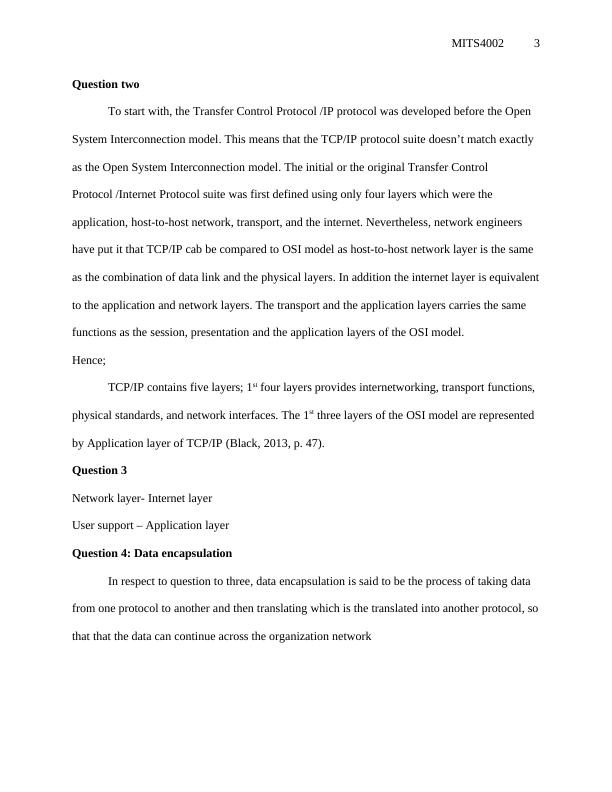Networking and Software Design Patterns
List the layers of the OSI model and the TCP/IP protocol suite, correlation between OSI and TCP/IP layers, network support and user support layers, data encapsulation, responsibilities of Data Link layer, difference between Network layer and Transport layer delivery, need for another mechanism at the Transport layer, responsibilities of Network layer and Transport layer, difference between port address, logical address, and physical address, services provided by the Application layer, advantages of combining Session, Presentation, and Application layers in TCP/IP protocol suite
Added on 2023-03-17
About This Document
Networking and Software Design Patterns
List the layers of the OSI model and the TCP/IP protocol suite, correlation between OSI and TCP/IP layers, network support and user support layers, data encapsulation, responsibilities of Data Link layer, difference between Network layer and Transport layer delivery, need for another mechanism at the Transport layer, responsibilities of Network layer and Transport layer, difference between port address, logical address, and physical address, services provided by the Application layer, advantages of combining Session, Presentation, and Application layers in TCP/IP protocol suite
Added on 2023-03-17
End of preview
Want to access all the pages? Upload your documents or become a member.



